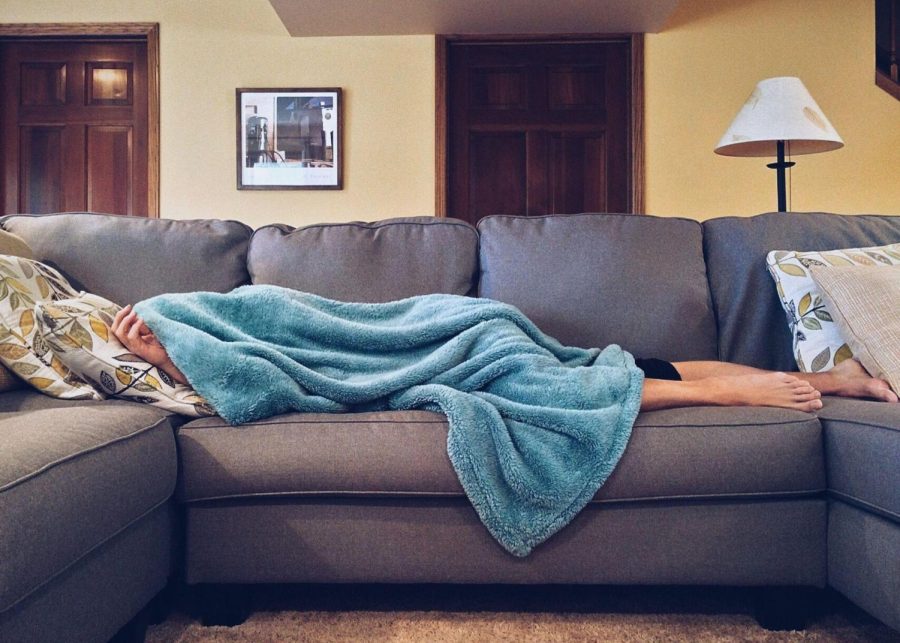How A Power Nap Can Benefit Your Work
November 1, 2022
Going by the recent trends, taking a nap at work is not considered rude anymore. There was a time though when taking a nap at work was considered unprofessional and was also looked down upon but recent trends and research indicate that a small nap during work revitalises your whole body and provides a positive momentum towards work. It also increases your creativity and also adds innovation to your work.
Though seemingly new, napping at work is not a new concept, during the initial years of the aviation industry or the time when aviation was in a boom, Pilots were scarce and the ones who were there had a hectic schedule, thus in order to keep flying without tiring these pilots used to take a simple nap in between flight to keep them active. Taking at least one power nap is one effective remedy for massive reduction in oversleeping at night.
What is A Power Nap And When To Have It?
A power nap is a short period of rest followed by a waking period, usually fifteen to 20 minutes. The goal of a power nap is to fall asleep quickly and wake up refreshed. However, power naps are not recommended for those suffering from insomnia.
It’s important to choose the right time to nap. Power naps are the most effective if they take place during a time of stress-free activities. Typically, the optimal time to take a power nap is 15 to 30 minutes. It is essential to take care not to overdo it, as a longer nap may interfere with your sleep at night.
Apparently, a power nap can help adults stay alert and increase their creativity. It also boosts your productivity in the workplace. So, how can you use a power nap to benefit your work? Here are some tips.
1. Taking A Power Nap Improves Alertness
- A power nap is a short nap of between 20 and 30 minutes that can improve your alertness. This kind of nap is ideal for those who are tired in the afternoon. In fact, the benefits of a power nap are similar to those of a nap that is longer, lasting for up to an hour. This type of nap helps your body recuperate from a stressful day, and it can even help you combat sleep debt, which is a serious problem that can contribute to low energy and reduced productivity. However, it is important to note that power napping is not for everyone. Those with sleep disorders or those who experience insomnia should avoid power naps.
- Although the ideal time for a power nap differs from one person to another, experts recommend a nap between 12:30 and 2 p.m. This is a natural period when your circadian rhythms are at their lowest, which makes it easier to fall asleep. However, napping after this time can interfere with a quality night’s sleep and disrupt your circadian rhythm. Those who work night or shift shifts should choose a nap time that is convenient for them.
- A study found that the duration of a power nap had an impact on overall cognitive performance, with an effect size of 0.18 (95% CI: 0.09 to 0.27). The researchers were able to stratify the different types of cognitive performance, including memory, alertness, and executive functions.
2. Increases Creativity
- Many companies are realising that implementing power naps at the office can improve their productivity and boost their creativity. Power naps are 20 to 25-minute naps that are beneficial for the brain and body. They are becoming increasingly popular, and companies like Google, Ben & Jerry’s, and Nike have integrated them into their offices to increase their employees’ energy and creativity.
- One study found that taking a power nap increases creative thinking. This was the result of the researchers studying participants’ brain activity while they slept. They found that the right side of the brain, which is responsible for creativity, experienced a boost of activity. This could be due to the fact that this part of the brain was doing some housekeeping and consolidating memories.
- Another study conducted by Harvard University found a direct correlation between napping and increased productivity. Researchers Sara Mednick, Ken Nakayama, and Robert Stickgold studied a group of participants. The study found that participants who slept for 90 minutes per day had higher performance than those who slept for four or five hours a day.
3. Reduces Fatigue
- Power naps can be an effective way to regain energy during a long day. They are especially useful for people who are sleep deprived, or who have had a long night. These naps also help people to retain their memory and improve creativity. Power naps can reduce the effects of oversleeping.
- Fatigue can affect your mood and energy levels, and it can make you feel unorganised and unfocused. It can also cause other health problems, such as depression, anxiety, and burnout. As such, if you find yourself constantly feeling fatigued, it’s crucial to take action. Take RescueTime to manage your time and build healthier workday habits.
- Many studies have shown that power naps can reduce fatigue and improve performance. NASA pilots, for example, take in-flight naps for up to 26 minutes each day. It has been found that these naps improve alertness and performance by up to 34%. Some companies have also begun encouraging their employees to take power naps in the workplace. Studies show that this practice reduces errors and improves productivity. Some companies have even set up nap rooms or nap chairs specifically for this purpose.
- The best time to take a power nap depends on your personal sleep schedule. For people who work during the day, naps taken before the post-lunch slump are most beneficial. Taking a nap after the post-lunch slump, however, could interfere with your circadian rhythm, and disrupt your quality of sleep at night.
4. Improves Performance
- Research suggests that taking a nap increases productivity. A study by Harvard University showed that people who power nap improved their performance and creativity in two different ways. The volunteers who napped in the morning were more creative, while the ones who napped at noon showed an improvement in their performance. This result may be due to the fact that power naps increase brain activity.
- The researchers used two types of memory to measure the effects of power naps. One of these was item memory, which is the type of memory used to remember items in a grocery list. The other type is associative memory, which involves remembering linked things. The hippocampus plays an important role in this type of memory.
- While power naps may seem like an ideal solution, there are a few things to keep in mind before using them. First, you want to make sure that you’re only taking a short power nap. This is because prolonged naps lead to deeper sleep and can make you feel groggy when you wake up. Another side effect of extended naps is that they make it harder for you to sleep at night.
Conclusion
Power naps are thus being included in many institutions positively and are also seen yielding results, though a wider acceptance of power naps is still being sought; its results will bring more of its acceptance.






